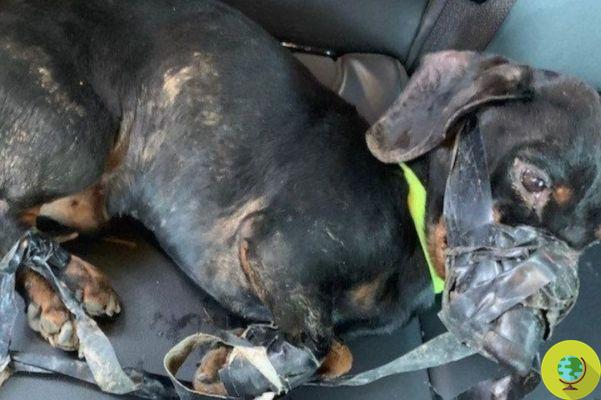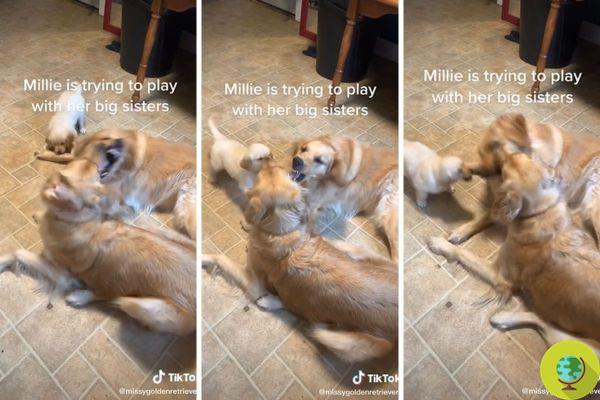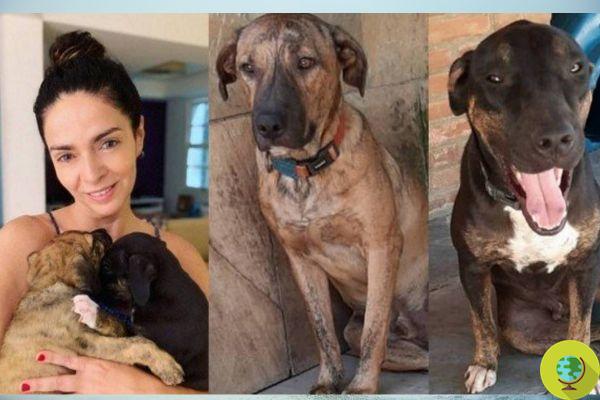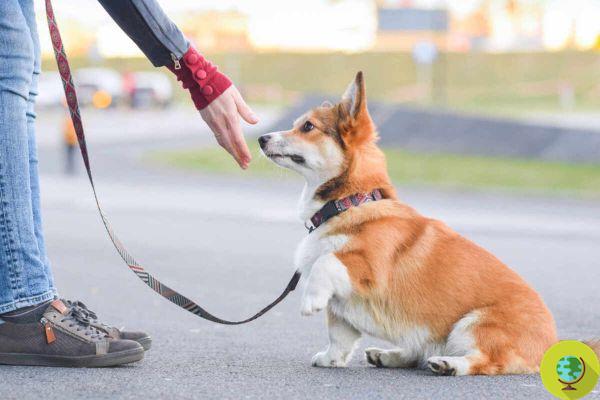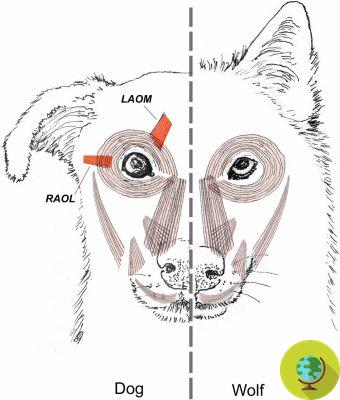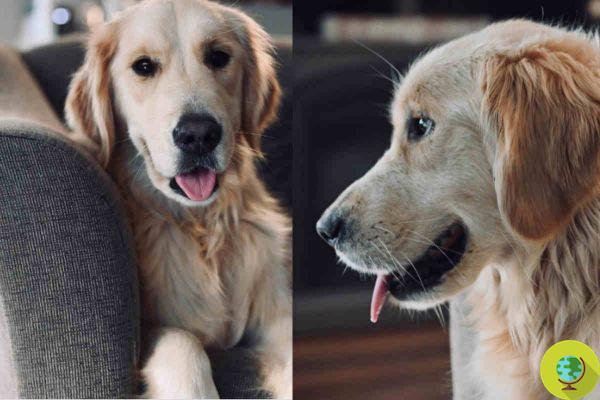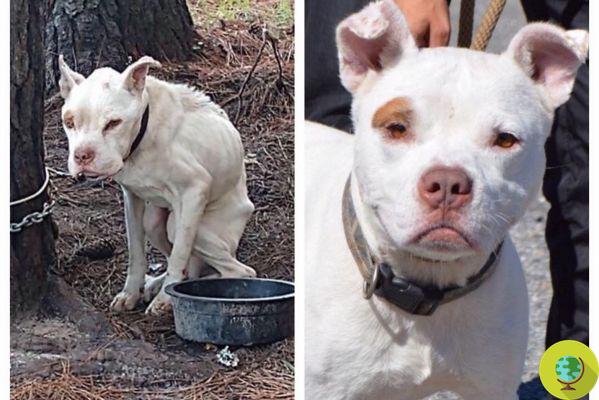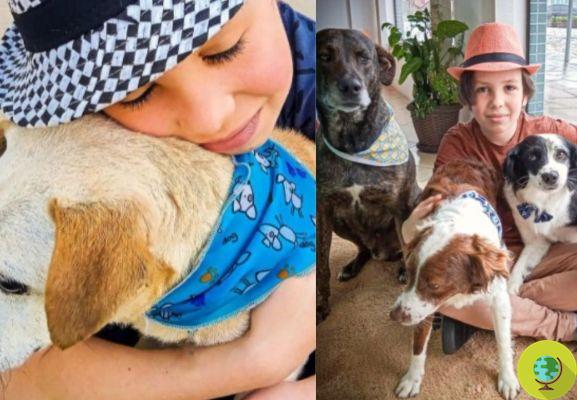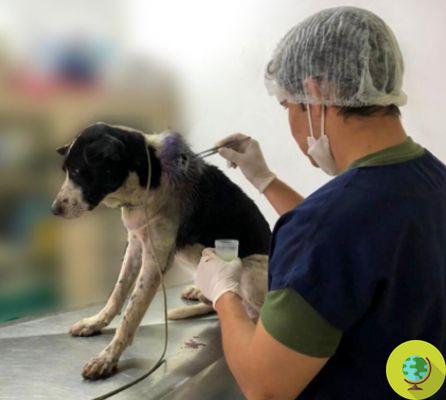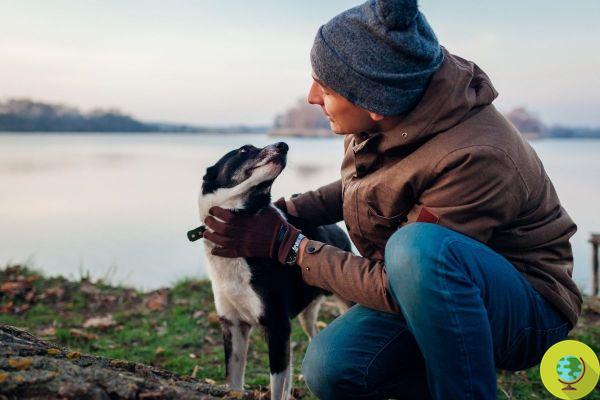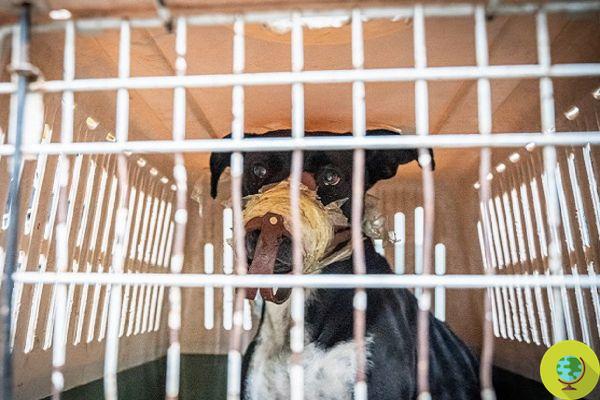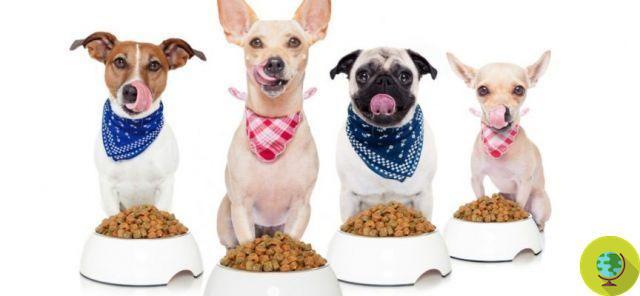
Nutrition for our dogs: do we really know which foods are suitable for them and which foods to avoid? To clarify the subject, we interviewed the dog educator Katya Cervio, an expert in home cooking for our four-legged friends.
He is about to end up run over, his mother saves him
Nutrition for our dogs: do we really know which foods are suitable for them and which foods to avoid? To clarify the subject, also following the recent Report service, we interviewed the dog educator Katya Cervio, expert in home cooking for our four-legged friends.
Let us therefore try to demystify the various urban legends about home nutrition for our dogs. What are the most ingrained myths among pet owners? And how can we orient ourselves towards a healthier and more correct diet for our dogs?
Let's find out what they are the myths to dispel about nutrition for our dogs. Here are 4 tips from Katya.
Index
"Raw meat makes dogs aggressive"
Raw meat, being for most dogs a very valuable resource, it can make the dog more possessive of food (eg. he is more inclined to growl if you approach the bowl to defend a chicken carcass, rather than a handful of tasteless crunches ...), but it does not make him absolutely more aggressive on the contrary ... calm, because the bones and the meat must be chewed and chewing causes the dog to relax for the release of endorphins. Eating raw meat the dog also feels contentment and therefore lowers the emotional state towards a state of calm and relaxation.
"Giant breeds need a lot of calcium"
It's important find a balance of football, an excessive dose of calcium carries risks to the giant puppy's health just like a deficiency you really want to prevent. Too much calcium reduces the absorption of other important nutrients. Young dogs in particular may not absorb high doses of calcium, compromising cartilage formation, thickening the joints and generating bone deformities. A deficiency leads to fragile and thin bones, unhealthy and easily deteriorated teeth and rickets.
"When the dog eats grass it means that he has a stomach ache"
Eating grass for a dog is normal. Studies have been done which have established that only a fraction of dogs eat grass to induce vomiting. Nor has the ancient urban legend been confirmed that when dogs eat grass, the weather changes.
To dogs weed just like it, especially when young and fresh. The grass is an excellent food for the intestinal flora, it contains microorganisms that reconstitute it, the young one has a very juicy and aromatic taste. It is very nutritious and rich in crude fiber, and therefore maintains and helps intestinal peristalsis.
Grazing helps dogs with stress. The herb tastes sweet because it contains sugary substances. Ingestion of grass helps to cope with stressful situationsChewing relaxes the dog, because endorphins are released from the movement of the jaw.
We must not forget that grass contains water, and therefore dogs use it when they do not have access to drinking water. Another reason your dog eats blades of grass may be that he had previously ingested something that caused him nausea. In this case, the dog controls his digestive problems by eating grass. The herb can help the dog vomit as well to relieve tonsillitis problems.
"Garlic is an excellent pesticide" or "Garlic for dogs is toxic"
Virtue lies in the middle, the Latin phrase always reminds us of the balance between extremes, the measure in things: between garlic yes and garlic no, I say garlic with measure and certainly not as the only pesticide.
With modern parasites it is advisable to use specific pharmaceutical products. In recent decades, the effects of garlic on dogs have also been studied in veterinary medicine and it has been understood that used with balance it can be a useful food.
Garlic is an excellent antioxidant, a friend of the heart that makes the blood more fluid and lowers blood pressure. It stimulates the body's defenses, decreases aging disorders, offers better resistance to parasites as long as it produces a skin exhalation, improves the appearance of the hair. They also found themselves positive effects on dogs with mange and dermatomycosis.
Ma how much garlic to give?
The lethal dose is about two heads of garlic per dog or a daily and continuous use over time. The recommended dose is 1/2 clove for small dogs per week, 1 clove for medium / large dogs and 1 1/2 cloves for giant dogs per week. It can also be used in powder in the measure of 1/2 coffee spoon.
READ: HOME FOOD FOR DOGS AND CATS. ADVICE FROM THE EXPERT
Will find more tips and recipes for dogs and cats in "Put your hand in it", our new one book dedicated to pets.
Marta Albè
Read also:
FOOD FOR PETS: 4 DANGEROUS INGREDIENTS HIDDEN IN PET FOOD
PET FOOD: DO YOU REALLY KNOW WHAT IS IN YOUR DOG OR CAT'S FOOD?
WHAT IS INSIDE THE CROQUETTES FOR DOGS AND CATS? LET'S CLEAR ABOUT THE SHOCK REPORTING SERVICE





